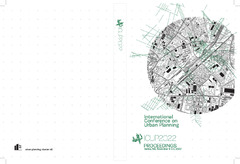Приказ основних података о документу
Making Cities More Resilient Through Urban Design: Case of Recreational Complex in “Block 44”, New Belgrade
| dc.contributor | Tanić, Milan | |
| dc.contributor | Dinić Branković, Milena | |
| dc.contributor | Kondić, Slaviša | |
| dc.contributor | Mirić, Aleksandra | |
| dc.contributor | Milošević, Vuk | |
| dc.creator | Živković, Jelena | |
| dc.creator | Nikezić, Ana | |
| dc.creator | Cvetković, Marija | |
| dc.date.accessioned | 2023-11-15T09:39:40Z | |
| dc.date.available | 2023-11-15T09:39:40Z | |
| dc.date.issued | 2022 | |
| dc.identifier.isbn | 978-86-88601-74-0 | |
| dc.identifier.issn | 2738-0548 | |
| dc.identifier.uri | https://raf.arh.bg.ac.rs/handle/123456789/1478 | |
| dc.description.abstract | Throughout history, cities have faced risks but have also demonstrated their resilience to different kinds of disturbances and changes. Today, the scale and the unpredictability of urban risks are increasing due to the complexity of city systems and the uncertainty associated with many hazards, including climate change. The need to make cities more resilient affects how we plan, design, and build our cities. Urban design is a discipline that links architecture, landscape, and urban planning to provide meaningful, safe, functional, and pleasant places for people. As such, it is recognized as an essential tool for adapting cities to climate change and responding to other risks and disturbances. This paper explores how urban design can be used to improve the recreational quality of abandoned urban spaces while, at the same time, helping to make cities more resilient. The case of a planned but only partially built and abandoned recreational complex in New Belgrade is chosen as a context and a starting point of the study, being an example of the absence of resilience thinking in urban development. The study uses research by design method (in the context of an urban design studio) to identify new urban design models through which links between cultural landscape, urban recreation, and climate change adaptation can be established and analyzed. The results indicate that, although all identified urban design models enable the introduction of measures to adapt to climate change, the level of their contribution varies concerning spatial scales as well as different dimensions of urban resilience. | sr |
| dc.language.iso | en | sr |
| dc.publisher | Faculty of Civil Engineering and Architecture, University of Nis | sr |
| dc.relation | The research was realized within the Erasmus + Strategic Partnerships for Higher Education entitled “Enhancing of Heritage Awareness and Sustainability of Built Environment in Architectural and Urban Design Higher Education” (HERSUS). | sr |
| dc.relation | info:eu-repo/grantAgreement/MESTD/inst-2020/200090/RS// | sr |
| dc.rights | openAccess | sr |
| dc.source | Proceedings of ICUP2022, 4rd International Conference on Urban Planning, Niš, 9-10th November 2022 | sr |
| dc.subject | urban design | sr |
| dc.subject | resilient cities | sr |
| dc.subject | climate change | sr |
| dc.subject | urban recreation | sr |
| dc.subject | cultural landscape | sr |
| dc.title | Making Cities More Resilient Through Urban Design: Case of Recreational Complex in “Block 44”, New Belgrade | sr |
| dc.type | conferenceObject | sr |
| dc.rights.license | ARR | sr |
| dcterms.abstract | Цветковић, Марија; Живковић, Јелена; Никезић, Aна; | |
| dc.citation.spage | 85 | |
| dc.citation.epage | 94 | |
| dc.identifier.fulltext | http://raf.arh.bg.ac.rs/bitstream/id/5047/ICUP2022_ZBORNIK_Zivkovic_Nikezic_Cvetkovic.pdf | |
| dc.identifier.rcub | https://hdl.handle.net/21.15107/rcub_raf_1478 | |
| dc.type.version | publishedVersion | sr |

